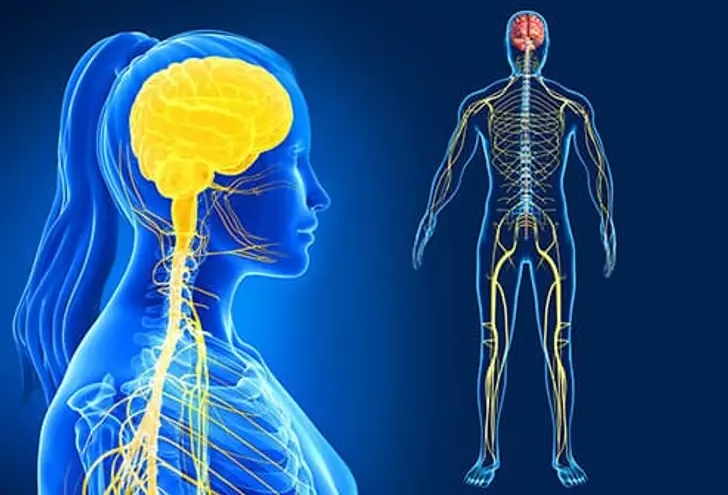Your cart is currently empty!
Daily Practices to Balance the Vagus Nerve

Why the Vagus Nerve Is Central to Holistic Healing
For holistic health practitioners, supporting clients in restoring nervous system balance is foundational to healing. Whether you’re addressing trauma, chronic stress, inflammation, or burnout, one of the most effective entry points is the vagus nerve.
The vagus nerve, the longest cranial nerve in the body, plays a vital role in regulating the parasympathetic nervous system—our “rest and digest” mode. It influences heart rate, digestion, immune function, and emotional regulation. When vagal tone is high, clients are more resilient, calm, and better able to heal.
As a practitioner, understanding and integrating daily vagus nerve regulation practices into your clinical or coaching approach can profoundly enhance client outcomes.
The Polyvagal Perspective: A Foundation for Holistic Care
Polyvagal Theory, developed by Dr. Stephen Porges, offers a roadmap for understanding how the nervous system responds to safety, danger, and disconnection. It identifies three primary states:
- Ventral Vagal (Safe & Social): Calm, connected, and regulated
- Sympathetic (Mobilized): Fight or flight, anxiety, or panic
- Dorsal Vagal (Shut Down): Freeze, dissociation, or exhaustion
Chronic stress or trauma can lead to dysregulation, trapping individuals in sympathetic overdrive or dorsal collapse. Supporting vagal tone helps restore access to the ventral vagal state, promoting healing, connection, and emotional regulation.
Signs of a Dysregulated Nervous System
Clients may present with:
- Digestive issues (IBS, bloating, poor absorption)
- Anxiety, depression, or chronic fatigue
- Insomnia or irregular sleep patterns
- Tension headaches, TMJ, or chronic pain
- Difficulty managing emotions or feeling overwhelmed
- Emotional numbness or disconnection
The good news: The vagus nerve can be stimulated and strengthened with consistent, accessible daily practices.
Top Daily Practices to Support Vagus Nerve Health
These techniques can be incorporated into client wellness plans or guided during sessions:
1. Diaphragmatic Breathing (Belly Breathing)
Encourage slow, deep inhales through the nose and long, gentle exhales through the mouth. Focus on expanding the lower belly.
✅ Why it works: Stimulates the vagus nerve via the diaphragm, reducing heart rate and activating the parasympathetic system.
Tip: Use a 4-7-8 or 5-5-5 breathing rhythm during sessions.
2. Cold Exposure (Vagal Stimulation)
Splashing the face with cold water or taking cold showers can stimulate the vagus nerve via the diving reflex.
✅ Why it works: Triggers a parasympathetic response and improves heart rate variability (HRV).
3. Humming, Chanting, or Singing
The vagus nerve runs near the vocal cords; vocal vibrations can increase vagal tone.
✅ Why it works: Activates the vagus nerve and supports emotional expression and throat chakra balance.
Practice Suggestion: Incorporate sound toning or mantras into breathwork sessions.
4. Gentle Neck and Cranial Massage
Techniques like craniosacral therapy, myofascial release, or even gentle self-massage around the jaw, ears, and neck support vagal pathways.
✅ Why it works: Stimulates vagal nerve endings and relaxes key tension areas.
5. Guided Somatic Movement and Body Awareness
Somatic practices like trauma-informed yoga, qigong, or Feldenkrais can help clients safely reconnect with their bodies and modulate their nervous system state.
✅ Why it works: Encourages interoception (body awareness), which enhances nervous system regulation.
6. Laughter and Social Connection
Healthy vagal tone supports social bonding—and social bonding strengthens vagal tone. Facilitate safe connection spaces in group work or client sessions.
✅ Why it works: Ventral vagal activation is linked to feelings of trust, empathy, and safety.
How Practitioners Can Integrate Vagus Nerve Support
As a holistic practitioner, consider incorporating the following into your work:
- Begin sessions with grounding breathwork or orienting
- Educate clients on polyvagal theory in simple, relatable terms
- Assign daily “nervous system hygiene” practices
- Include vagus nerve stimulation in treatment plans (e.g., manual therapy, sound healing, breath practices)
- Track client progress through signs of improved regulation: better sleep, reduced anxiety, digestive improvements, emotional resilience
Holistic Benefits of Vagus Nerve Regulation
Enhancing vagal tone contributes to:
- Reduced inflammation and improved immune response
- Better digestion and gut-brain health
- Lower blood pressure and heart rate
- Improved emotional stability and resilience
- Deeper states of rest, recovery, and healing
Final Thoughts: Nervous System Health Is Foundational
In today’s fast-paced, stress-saturated world, supporting the nervous system—especially through vagus nerve regulation—is not optional; it’s essential.
As a holistic practitioner, you have the tools to guide clients back to balance—not just in mind and spirit, but in nervous system physiology. Start with small, accessible practices, and watch transformation unfold from the inside out.
Looking to deepen your nervous system regulation skills?
Consider training in Somatic Experiencing®, Polyvagal-Informed Practice, or Trauma-Informed Breathwork to further empower your clients.
